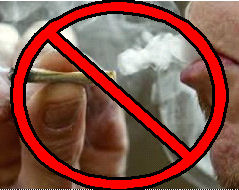National Health Organizations
National Health Organizations That Oppose “Medical” Marijuana
American Glaucoma Society (AGS) states that marijuana’s mood altering side effects and short duration of action, coupled with a lack of evidence that its use alters the course of glaucoma, preclude recommending this drug in any form for the treatment of glaucoma at the present time. Click here to view the organization’s full position statement.
National Comprehensive Cancer Network (NCCN) has stated that the use of marijuana is not recommended for management of chemotherapy-induced nausea and vomiting, and is not part of the NCCN Clinical Practice Guidelines of Oncology in Antiemesis. Click here to view the organization’s journal article on this issue.
National Multiple Sclerosis Society (NMSS) states that there are serious uncertainties about the benefits of marijuana relative to its side effects and that studies completed thus far have not provided convincing evidence that marijuana or its derivatives provide substantiated benefits for symptoms of MS. Click here to view the organization’s full position statement.
Narcotics Enforcement Officers Association (NEOA) has gathered extensive material on the subject of “medical” marijuana and found that the overwhelming majority of the scientific evidence to date has shown that marijuana is a dangerous drug, that no recognized medical authority recommends the use of crude marijuana as medicine, and that all recognized medical groups oppose the "medicalization" of marijuana. Click here to view the organization’s full position statement.
The American Academy of Child and Adolescent Psychiatry (AACAP) has stated its concern about the negative impact of “medical” marijuana on youth. Adolescents are especially vulnerable to the many adverse developmental, cognitive, medical, psychiatric, and addictive effects of marijuana. Of particular concern to our field, adolescent marijuana users are more likely than adult users to develop marijuana dependence, and their heavy use is associated with increased incidence and worsened course of psychotic, mood, and anxiety disorders. Furthermore, marijuana's deleterious effects on cognition and brain development during adolescence may have lasting implications. Click here to view the organization’s full position statement.
The American Academy of Ophthalmology (AAO) states that that no scientific evidence has been found that demonstrates increased benefits and/or diminished risks of marijuana use to treat glaucoma compared with the wide variety of pharmaceutical agents now available. Click here to view the organization’s full position statement.
The American Academy of Pediatrics (AAP) opposes the legalization of marijuana. Marijuana is the illicit substance most commonly abused by adolescents. Any change in the legal status of marijuana, even if limited to adults, could affect the prevalence of use among adolescents. Click here to view the organization’s full position statement.
The American Cancer Society (ACS) states that better and more effective treatments are needed to overcome the side effects of cancer and its treatment. The ACS does not advocate the use of inhaled marijuana or the legalization of marijuana. The ACS also states that for most symptoms, there are more effective drugs already on the market. Click here to view the organization’s full position statement.
The American Society of Addiction Medicine (ASAM) asserts that cannabis, cannabis-based products, and cannabis delivery devices should be subject to the same standards that are applicable to other prescription medications and medical devices and that these products should not be distributed or otherwise provided to patients unless and until such products or devices have received marketing approval from the Food and Drug Administration. ASAM rejects smoking as a means of drug delivery since it is not safe. Click here to view the organization’s full position statement.

